Early Past
Masters Jewel dtd 1775
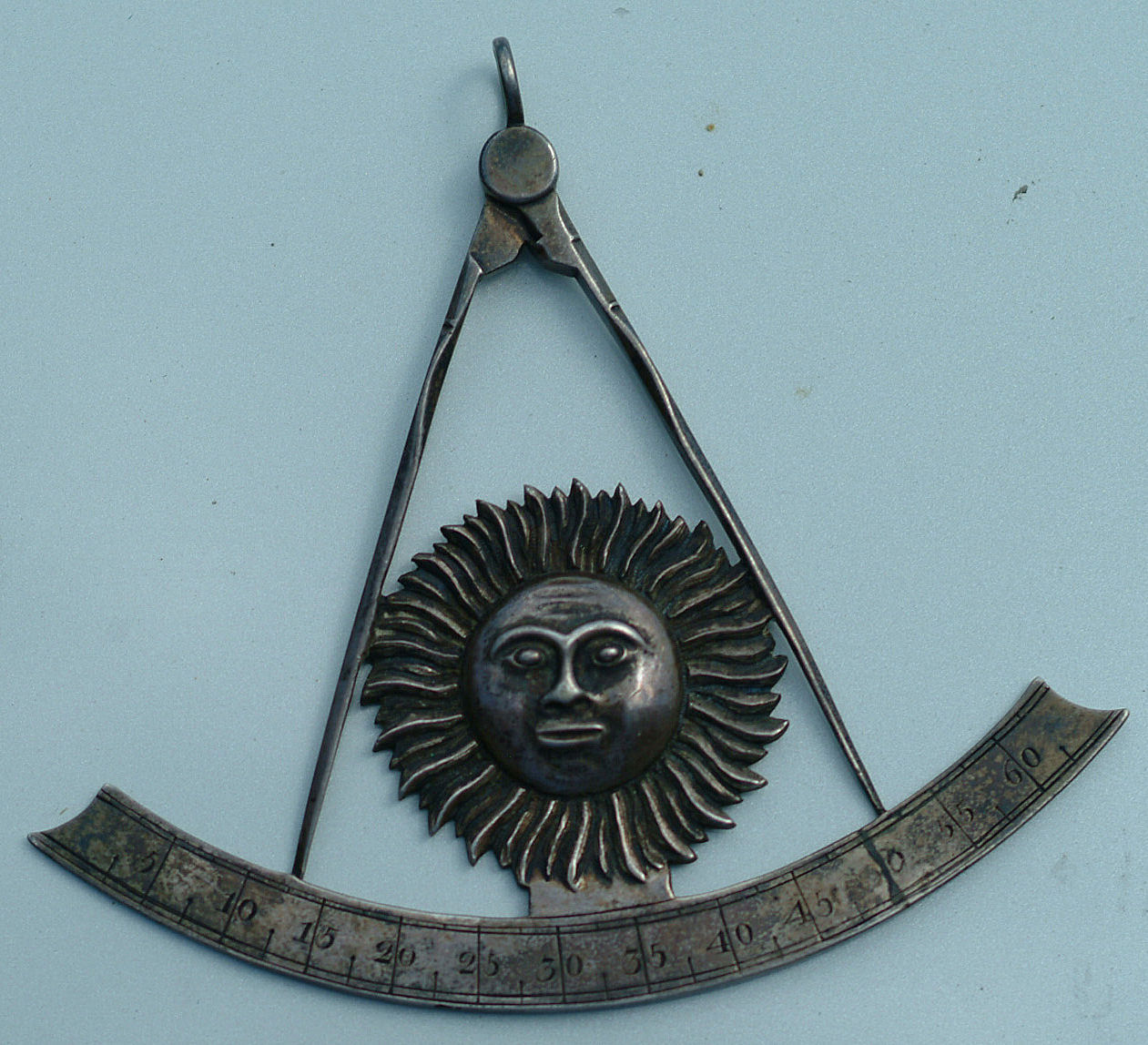
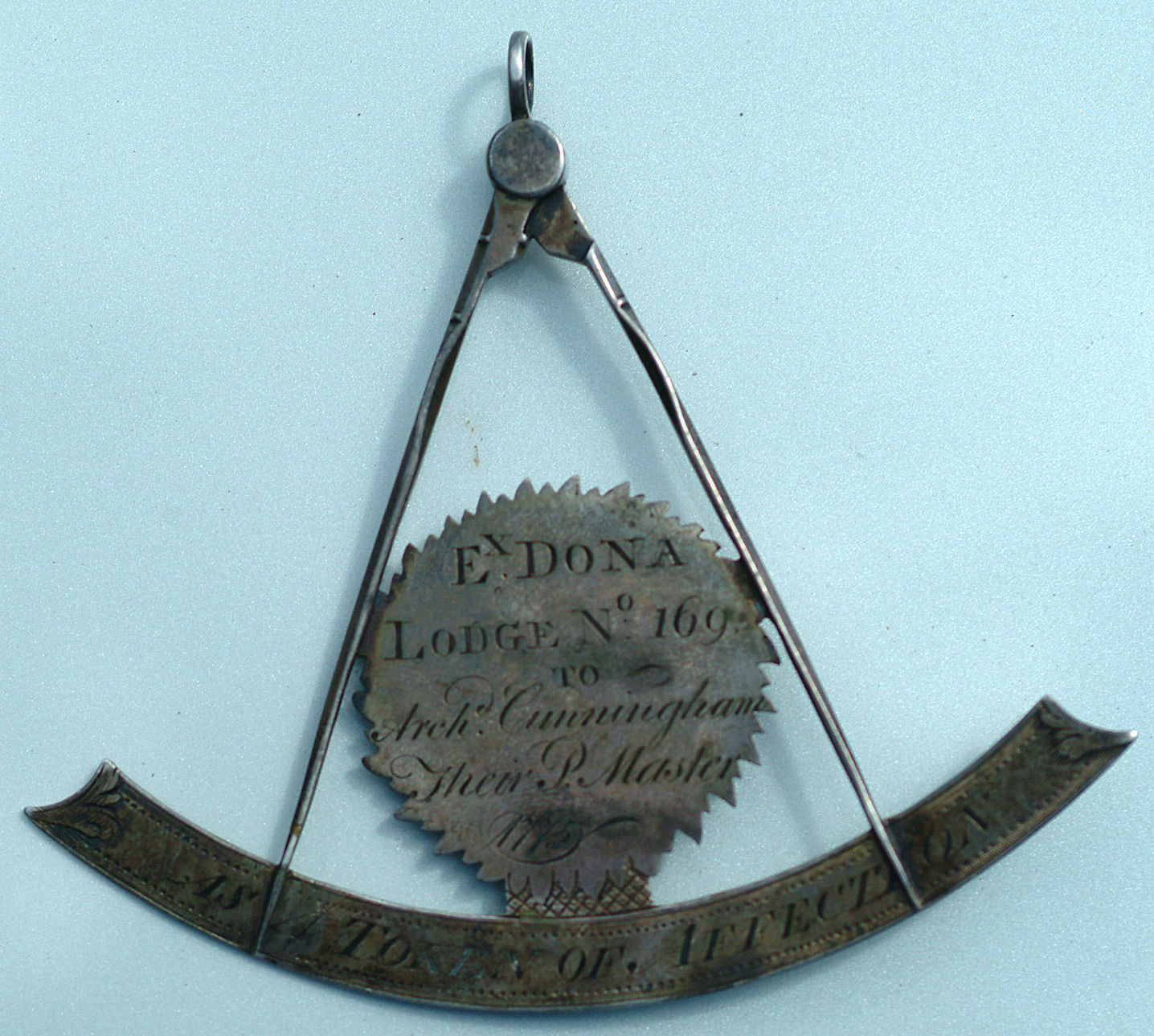
This early Past Masters Jewel is
made of coin silver and dated 1775. It was presented by ExDona Lodge
No 169 to Arch Cunningham, Their P Master - 1775 - As A Token Of Affection.

Early Past
Masters Jewel dtd 1854
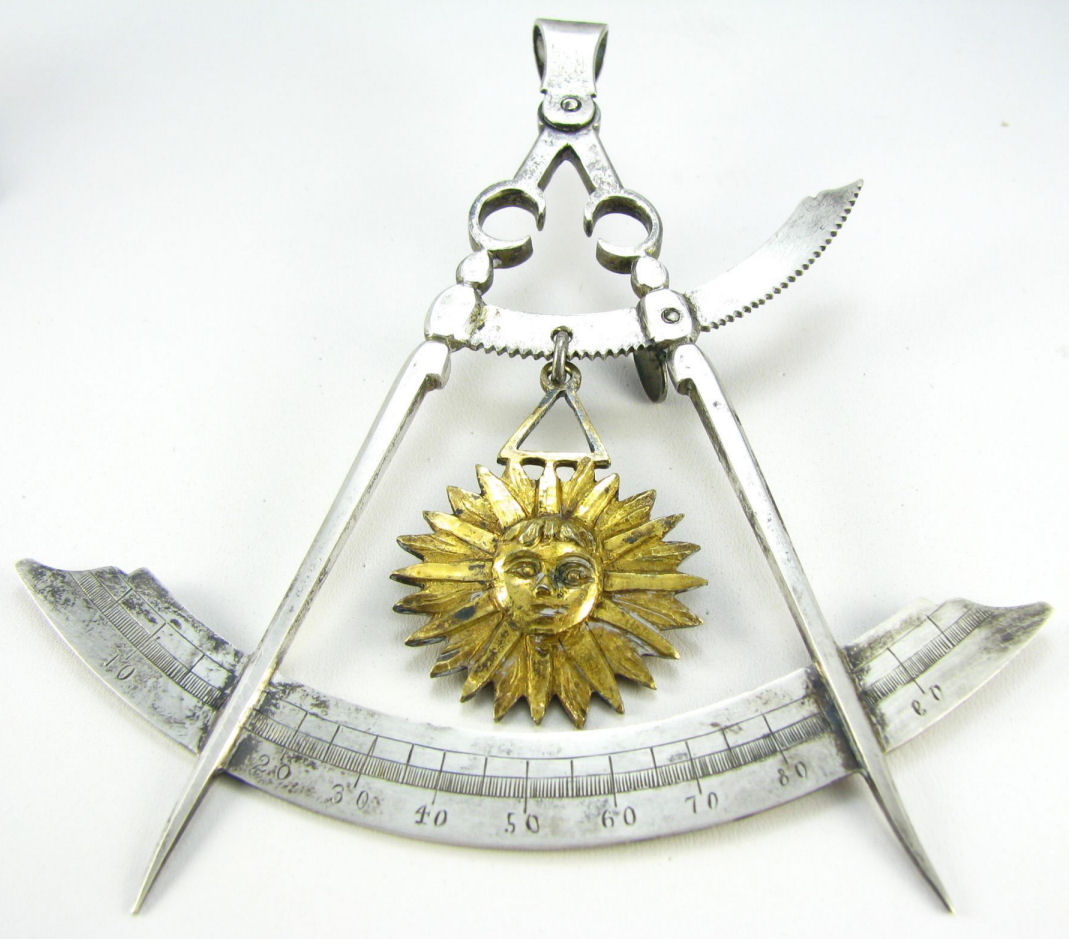
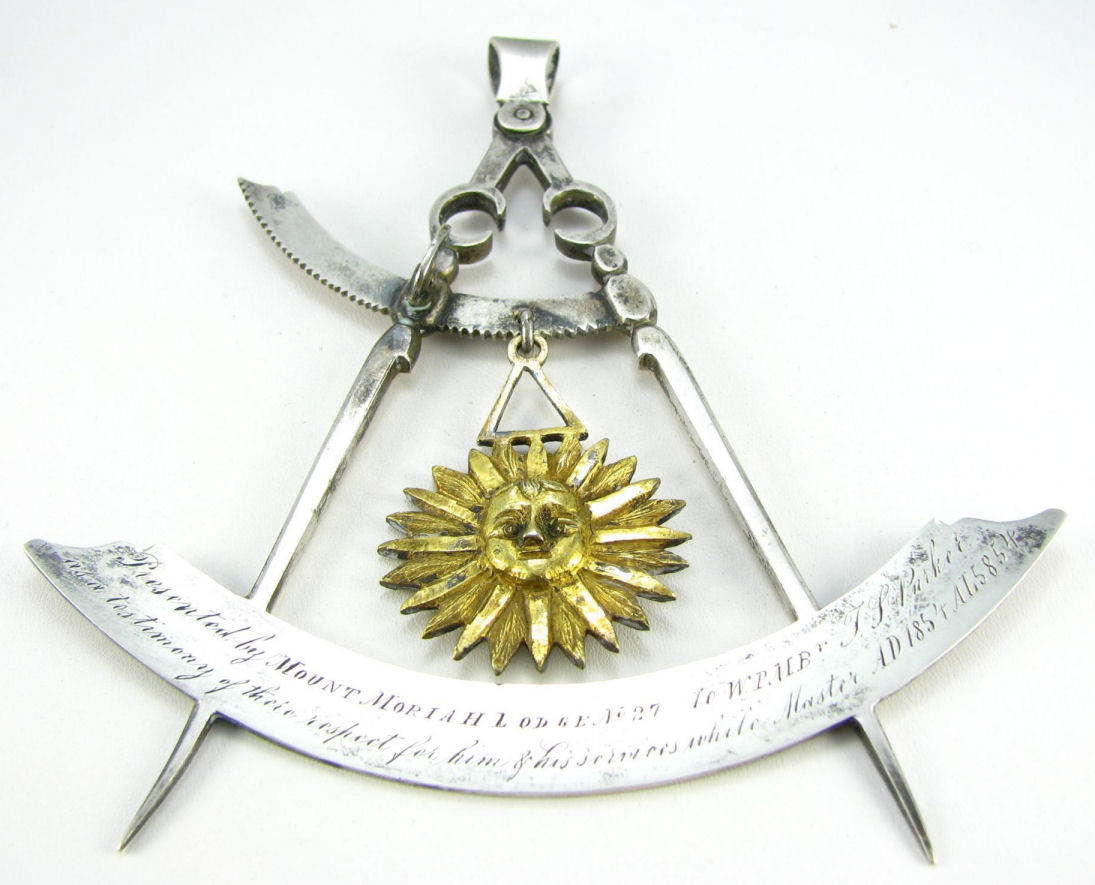
This early Past Masters Jewel is
also made of coin silver and dated 1854. It was presented Mount
Moriah Lodge No. 37 to W.P.M.B. - T.J. Parker as a testimony of their respect
for him of his services while Master A.D. 1854 - A.L. 5854

The Meaning and History of the
Jewels and Symbols of a Past Master
Written By:
Carl W. Davis – 2005 Worshipful
Master – Peru-Miami Lodge #67
Free and Accepted Masons of the
State of Indiana, USA
As Freemasons we are quite aware of the
powerful nature of symbols. From our first
preparations to enter the Fraternity, we have
been taught through symbolism. We have
found meaning and comfort in symbols. And have,
if we are true to our charges, striven
to improve our character by their teachings, as
we travel toward the rising sun, in the
footsteps of the Widow’s Son. This essay will
explore the meaning and historical usage
of the specific symbols used to represent a
Past Master of a Craft Lodge.
47th Prop. Of Euclid Suspended by a Square
From a current global perspective, the most
widely used Past Master’s symbol consists of
the 47
th
Proposition of Euclid suspended from a Square. The 47th
proposition of Euclid
has been used in Masonic symbolism at least as
early as 1735 when it was published in
Smith’s Pocket Companion. However, no evidence
can be found that it was used
specifically as a Past Master’s symbol until
the year 1815 when the first Book of
Constitutions of the United Grand Lodge of
England was published, and the prescription
for a Past Master’s Jewel consisting of “The
square and diagram of the 47th prop. 1st B
of Euclid, engraved on a silver plate pendent
within it.” was codified.
i
In order to understand why this symbol was
chosen to represent the office of Past Master,
we must first look at the meaning of The 47
th
proposition of Euclid. This proposition
teaches one of the most important principles of
geometry, known to us as the
Pythagorean Theorem, which is communicated by
the formula “A
2 + B2 = C2”
when
working with a Right Triangle where “C”
represents the hypotenuse. We are also taught
that whenever a triangle has a side length
ratio of Three, Four and Five, the triangle will
be a right triangle.
ii
Pythagorean’s Theorem is appropriate for the
Past Master because it teaches us that when
working with Right Triangles (a reference to
the Master’s Square), the square of the
hypotenuse is equal to the sum of the square of
the other two sides as shown in figure 1.
iii
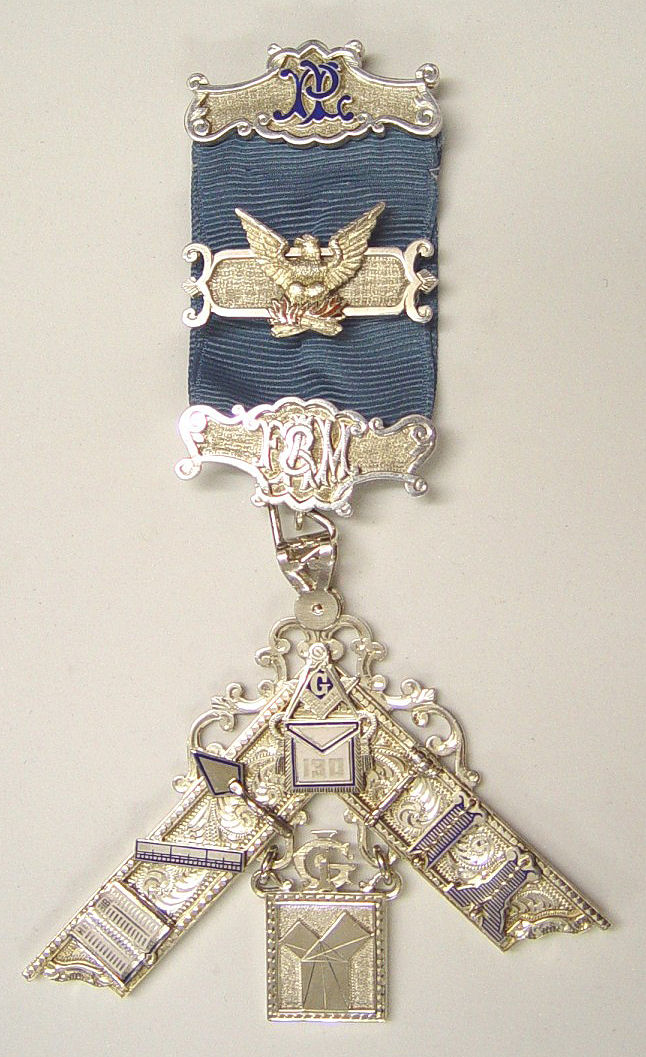
This symbol is suspended from a Square, to show
that the Past Master has learned how to
make complex constructions from the simple
angle of ninety degrees. This is symbolic of
the knowledge and wisdom that a Craft Lodge
Past Master has gained from his service to
the Craft. This Past Master’s Jewel is
illustrated in Figure 2. This jewel has changed
aesthetically over time. Originally, the square
was hung so that one arm was
perpendicular to the ground, and the other
parallel to it.
Even in many of the jurisdictions that do not
use the 47
th
Proposition of Euclid in their
Past Master’s jewel, this proposition is
referenced in the lectures of their rituals. It is
important to note however, that any claim that
Pythagoras was a Freemason, or that he
shouted “I have Found it” and slaughtered
cattle upon his discovery of this equation, are
best understood as apocryphal ledged, and not
as historical fact. It is also important to
know, that while Western culture credits
Pythagoras with this discovery, historians tell us
that the Ancient Egyptians and Babylonians had
understood and utilized this equation at
much earlier dates.
iv
Also of interest to note is the use of the 3,
4, 5 length ratio of a Right Triangle in some
jurisdictions. In those ritual traditions, a
candidate will traverse the lodge three times as
an Entered Apprentice, four times as a Fellow
Craft, and five times as a Master Mason,
thus “forming a Square” by the time he is
Raised.
It is clear that there is much to be learned
from the symbolism of this Past Master’s
Jewel.
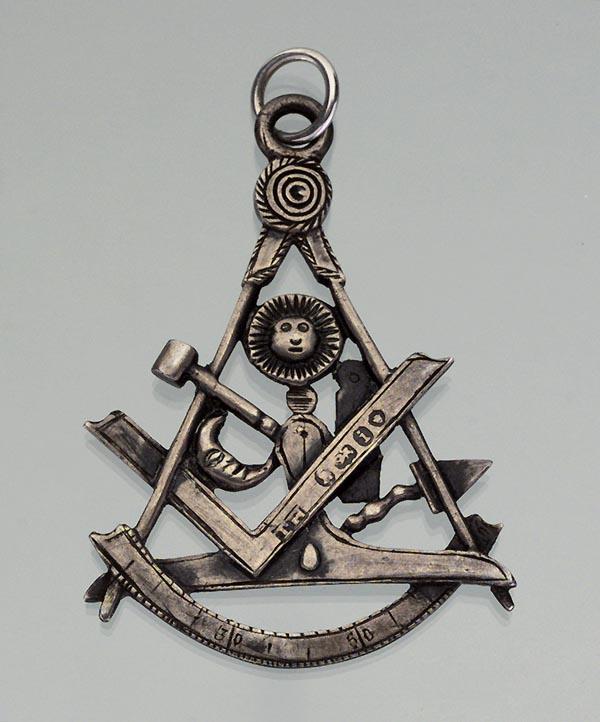
The Compass, Square, Sun and
Quadrant
The oldest known Past Master’s Symbol consists
of the Compass, Sun, Square and
Quadrant. This is the most popular Past
Master’s Jewel used in the United States.
The earliest written evidence that a Past
Master’s jewel in this form was used can be
found in an exposé of Masonry published in
April of 1760 entitled Three Distinct Knocks
which said “The Pass Master Hath the Compasses
and Sun with a Line of Cords About
his Neck.”
v
This symbol includes the Square to remind us
that it is by the Square that the wearer
governed his lodge as Master. The Quadrant
shows what angle the Compass is opened at.
This is appropriate for the symbol of a Past
Master, because it is by the Compass that the
Freemason keeps himself within due bounds of
all mankind. And, it is the role of the
Worshipful Master to ensure that all members of
his lodge, and all Regular Masons living
within his lodge’s jurisdiction are making
proper use of their moral compass. It also
generally shows that the Compass is opened to
the angle of 60 degrees. This is significant
because 60 degrees is the angle of an
equilateral triangle. The equilateral triangle
represents perfect balance, as all sides are of
equal length, and the triangle appears the
same from all directions. It therefore teaches
that the man who wears this jewel has
learned the lessons of Freemasonry, and lives a
balanced life. It also shows that the
wearer of this jewel has served equally in the
South, the West, and the East.
The Sun is used in this symbol to represent
that the wearer has observed the sun at , 1. its
meridian height in the South, 2.its setting in
the West, and 3.its rising in the East.
The Sun also represents light. And, it is
understood that the Past Master of a Craft Lodge
is a source of Masonic Light to his brothers.
It closely shares the meaning of the
Pentalpha in Masonic symbolism and has on
occasion been interchanged with it. Thus it
is also appropriate to say that the Sun
represents perfect light.
vi
It is of interest to note that the Grand Lodge
of Scotland uses this symbol as their Past
Master’s Jewel, without the Sun.
The Compass, Sun and Quadrant
In several jurisdictions, especially in the
United States, the Past Master’s Symbol consists
of the Compass, Sun and Quadrant. The meaning
of the Compass, and Sun are the same
as in the symbol described above. However, this
symbol is unique, as it can also be
understood to be a sextant.
A sextant is a tool of navigation, used to
measure altitude, and enable one to determine
his location, and thus plot a course to travel.
This is a very appropriate symbol for a Past
Master, as he has had to navigate the course of
his lodge during his Eastern tenure. It also
shows that he is capable of assisting in the
navigation of the lodge, if his successors may
request his assistance.
vii
The Compass, Square and Letter “G”
Perhaps the most unique Past Master’s symbol is
found in Ireland. The Irish Past
Master’s symbol consists of the Compass,
Square, and Letter “G” in the center.
This is in fact the same symbol used to
represent Freemasonry in general, in the United
States and other places.
To most of the world, this symbol shows the
Compass, the Square and a letter which
represents “God”, “Geometry”, “Grand Architect
of The Universe”, or perhaps the
Volume of Sacred Law.
In Ireland, however, the letter “G” is not used
to represent any of those things. It is
represented in the lodge room, above the
Master’s Chair. It is also represented in the
jewel of a Past Master. This is because to the
Irish Master, the letter “G” serves to
remind him of a word that is very special to
him, and all other Installed Masters alone.
viii
i To Talk of Many Things by Most Worshipful Brother David C.
Bradley
ii Spirit of Masonry in Moral and Elucidatory Lectures Wm.
Hutchinson. London: J. Wilke, 1775.
iii The 47th Proposition of the 1st Book of Euclid as part of
the Jewel of a Past Master by: Brother Thomas
Greene
iv Euclid’s Elements, Book I, Proposition 47 D.E.Joyce, Clark
University 1996
v To Talk of Many Things by Most Worshipful Brother David C.
Bradley
vi
H. R. A. Grand Chapter Register ("Ancients")Lau. Derrnott C.F.
Kell, Litho, 8, Furnival St Holborn, E.C
vii The Instructive Tongue by: Bro. Louis F. Bandell, Jr.,
P.M., W.M. 2003.
viii The Letter G by Bro. Mark Dwor

